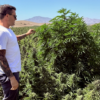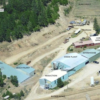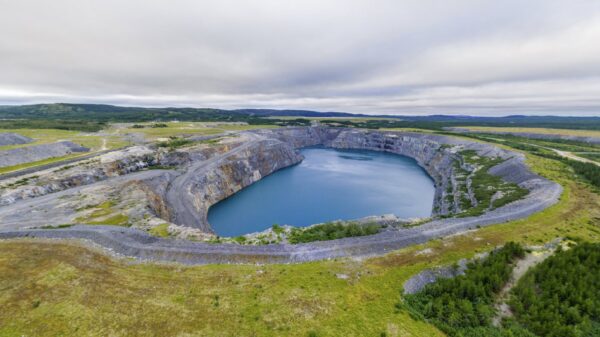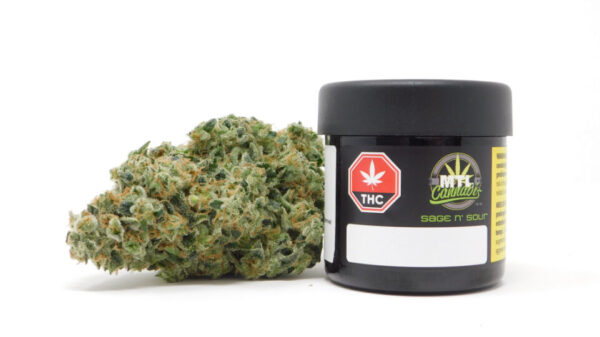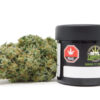One full year into Canada’s bold marijuana legalization experiment, and the overwhelming consensus is it’s been a dud. High prices, inferior quality, supply issues and a slow legal store rollout have all contributed to a persistent cannabis black market.
It has also been a disaster for investors as most of the major cannabis stocks have dropped by at least 50 per cent in the first full year after the sector was hammered by scandals, lack of profits and executive shakeups on top of the other issues.
But it wasn’t all black clouds in the Great White North. In fact, the legal industry has contributed $8.26 billion to Canada’s GDP as of July this year, and licensed producers employ 9,200 workers on top of thousands of jobs created in retail.
Meanwhile, crime rates, impaired driving cases and hospital visits haven’t gone up since legalization, and the industry has even caused mini-booms in property value in some regions. All of those issues were supposed to be negatively effected by ending prohibition, according to legal weed opponents.
And the second phase of legalization in Canada, or so-called cannabis 2.0, kicked off Oct. 17 — exactly on the first-year anniversary for recreational pot — which promises to inject some life into the industry with higher margin products like vape pens and edibles hitting store shelves by mid-December.
But there’s still major issues that have weighed on the sector. Here’s a look back at some of the key issues the legal industry has faced in Year One, and how they may evolve moving forward.

Photo courtesy of Canopy Growth Corp. (TSX:WEED)
Black market still king in the north
The Trudeau government’s main goal when it legalized recreational pot wasn’t to enrich shareholders but to displace the shadow industry with a regulated, safe legal market to generate tax revenues and free up resources for police and the courts. But so far, that goal is far from being met.
According to StatsCan, 29 per cent of all users buy their cannabis from a legal source only.
The federal agency reported legal weed sales broke the $100 million plateau for the first time in July and based on the combined sales and growth rate figures the market for licensed marijuana is on pace to reach $1 billion. The national statistics office estimates total demand for cannabis in the country is around $6 billion, meaning the legal pot market only accounts for 17 per cent of total sales in the country.
According to a Cannabis Benchmarks data analysis by BNN Bloomberg, licensed producers should sell 105,000 kilograms of legal dried flower in the first full year of legalization, which is a fraction of the 924,000 kilograms of marijuana Canadians are estimated to consume annually.
Meanwhile, the Royal Bank of Canada estimates the legal industry is capturing only 12 per cent of total recreational weed sales, while other sources peg the number at 14 per cent to 30 per cent.
Most research, however, points to higher prices in the legal market than those from underground drug dealers.
The latest statistics show pot prices at licensed retailers come in at $10.23 per gram versus the $5.59 per gram in the black market. The gap has widened to 45 per cent higher prices in the legal market compared to its illicit competition from the 33 per cent gap at the start of legalization.
Michael Armstrong, a business professor at Brock University who has been following legalization closely, told Mugglehead the federal government should remove its $1 per gram minimum excise tax model so the licensed producers and retailers can compete with the tax-free black market.
“That minimum of $1 is a big chunk and makes it difficult for the legal industry to compete on price,” Armstrong said.
He recommends the government switch to a 10 per cent tax maximum, in order to make room for a cheaper “No Name” brand of weed to draw low income consumers into the legal market.
Last week, Hexo Corp. (TSX:HEXO)(NYSE:HEXO) launched a 28-gram bulk cannabis product that comes in at $4.49 per gram, which the company says is a price model where it absorbs the excise tax to help draw Canadian consumers away from the black market.

Photo courtesy of National Access Cannabis
More stores across Canada needed
As major pot producers like Hexo continue to ramp up production and cannabis supply, they’ve discovered there’s simply not enough licensed retail stores in Canada to move their product.
Investment bank Seaport Global calculates the country needs about 1,055 stores to realize the pot market’s actual potential. But the federal government granted provinces the power to control distribution and only a small number decided to go the private sector route resulting in a slower-than-expected store rollout.
Across the nation there are roughly 560 store licences issued by provinces, but they are spread out unevenly with more than half of those are in Alberta — and not all of those are up and running.
While Alberta, the countries fourth-largest province, has doled out more than 300 retail licences, in Ontario and Quebec, which combined account for almost two-thirds of Canada’s population, currently have around 45 stores open between them.
“Today, both Ontario and Quebec – Canada’s two most populous provinces – have one store for every 595,000 and 495,000 people, respectively, versus a saturation rate in Colorado, for example, of 10,000,” noted Canopy Growth (TSX:WEED) in a press release.
Breakdown of total stores in each province and territory:
- British Columbia: 86 licensed private retailers, and seven government-operated stores
- Alberta: 306 store licences issued, with more than 400 pending approval, including over 100 in the city of Calgary
- Saskatchewan: 39 stores open
- Manitoba: 26 retail location open, but government to open dozens more by next year
- Ontario: 25 stores running, with plans for 50 more by the end of the year, including eight on First Nation reservations
- Quebec: 21 stores open, but province expects 43 will be in operation by March 2020
- New Brunswick: 20 retail sellers open
- Nova Scotia: 12 provincially-run stores open, with more expected
- Prince Edward Island: Four government-operated stores open
- Newfoundland and Labrador: 25 stores open
- Nunavut: Online only through two private retailers:Tweed and Vertical Cannabis
- Northwest Territories: five stores open
- Yukon: four stores in operation
(Note: each province and territory operates an online portal for retail cannabis sales, except Nunavut)

Deposit Photos
Other notable numbers
According to Statistics Canada, 16 per cent of citizens aged 15 or older reported using cannabis in the second quarter of 2019, up from the 14 per cent that said they used pot when legalization began. Nova Scotia used the most marijuana out of all provinces at 24 per cent, while Quebec came in last, with only 10 per cent. Alberta ranked second in cannabis use at 20 per cent.
Meanwhile, men are almost twice as likely and women to partake in pot at 21 per cent compared to 12 per cent, respectively. And senior use jumped to 5 per cent from 3 per cent since the start of legalization.
The second phase of legalization is expected to bring in three million new cannabis users, according to one study, as items like pot-infused brownies, beverages and face creams will be available by the end of 2020. Deloitte estimates the market for alternative marijuana products could be worth up to $2.7 billion in Canada.





